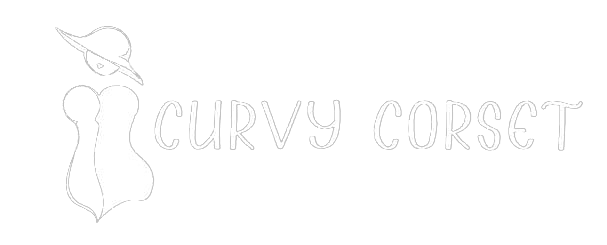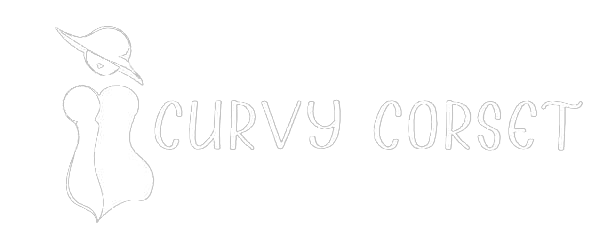Blog
Lacing Up for Spring: The Role of Corsets in Calgary’s Pre-Easter Fashion a Century Ago
In the early 20th century, Calgary was a bustling hub of fashion and culture, especially in the weeks leading up to Easter. As spring bloomed, women across the city prepared to showcase their finest outfits, with the corset playing a starring role in shaping the elegant silhouettes of the time. From Victorian corsets to waspie corsets, these garments were more than undergarments—they were symbols of style, status, and femininity. Let’s dive into the fascinating world of corsets in Calgary’s pre-Easter fashion a century ago, exploring their designs, cultural significance, and lasting legacy.
The Corset: A Fashion Staple in Early 20th-Century Calgary
Imagine a Calgary spring in the 1910s: horse-drawn carriages clatter down Stephen Avenue, and women in wide-brimmed hats and flowing skirts prepare for Easter Sunday services. At the heart of their outfits was the corset, a garment that molded the body into the coveted hourglass figure. Unlike today’s stretchy shapewear, corsets of this era were structured with whalebone, steel boning, or cording, designed to cinch the waist and accentuate the bust and hips.
Corsets weren’t just about aesthetics; they were a cultural necessity. In Calgary, a city eager to prove its sophistication, women wore corsets to align with global fashion trends set by Paris and London. Whether it was a waist corset for everyday wear or a luxurious leather corset for a special event, these garments defined elegance. Easter, a time for renewal and celebration, was the perfect occasion to debut a new corset, paired with a bell-shaped skirt or a tailored jacket.
Types of Corsets in Calgary’s Fashion Scene
Calgary’s fashion-conscious women had a variety of corsets to choose from, each with its own flair and function. Let’s explore some popular styles that graced the city’s pre-Easter wardrobes:
Victorian Corsets: The Classic Hourglass
The Victorian corset, with its exaggerated curves and tight lacing, was a favorite in Calgary during the early 1900s. These longline corsets extended from the bust to the hips, creating a dramatic hourglass silhouette. Made from satin, cotton, or silk, they were often adorned with lace or embroidery, making them as beautiful as they were functional. For Easter, a Victorian corset might be paired with a pastel gown, perfect for spring’s soft palette.
Waspie Corsets: A Petite Powerhouse
For women seeking a lighter option, the waspie corset was a game-changer. This short, waist-focused corset cinched the midriff without covering the bust or hips, offering flexibility and comfort. Ideal for Calgary’s active socialites attending Easter teas or church bazaars, waspie corsets were often crafted from breathable cotton or even vinyl corsets for a modern twist. Their versatility made them a springtime favorite.
Curvy Corsets: Celebrating Natural Shapes
Curvy corsets were designed to enhance a woman’s natural proportions, emphasizing a fuller bust and rounded hips. These corsets were particularly popular among Calgary’s diverse population, from ranchers’ wives to urban professionals. Made with flexible spiral steel stays, curvy corsets allowed for movement while maintaining a polished look, perfect for Easter parades or family gatherings.
Leather Corsets: Bold and Edgy
For the daring fashionista, leather corsets added a touch of rebellion to Calgary’s Easter style. These sturdy garments, often handmade, were reserved for evening events or high-society balls. Paired with a velvet skirt or lace blouse, a leather corset made a statement, blending rugged Calgary spirit with refined elegance.
The Craftsmanship Behind Calgary’s Corsets
Corsets in early 20th-century Calgary were feats of engineering. Local dressmakers and tailors, often trained in European techniques, crafted custom corsets to fit each wearer’s measurements. The introduction of the front-fastening busk in 1848 revolutionized corset design, allowing women to dress themselves without assistance—a small but significant step toward independence.
Materials like whalebone, steel, and cording provided structure, while fabrics such as coutil (a durable cotton) ensured longevity. For special occasions like Easter, corsets might feature decorative touches like ribbon lacing, floral embroidery, or even pearl accents. Mass-produced corsets, available through catalogues or Calgary’s emerging department stores, made these garments accessible to women of all classes, though the upper crust still favored imported French or English designs.
Corsets and Easter: A Social Statement
Easter was more than a religious holiday in Calgary—it was a fashion spectacle. Women used the occasion to display their wealth and taste, and corsets were central to this performance. A well-fitted corset signaled discipline and respectability, aligning with Victorian ideals of femininity. For example, a young woman attending an Easter service at Knox Presbyterian Church might wear a curvy corset under a tailored dress, her tiny waist drawing admiring glances.
Corsets also sparked debate. Dress reformists argued they were restrictive, while others saw them as empowering, allowing women to sculpt their bodies as they wished. In Calgary, where traditional values met modern aspirations, corsets bridged these tensions, offering both structure and style.
The Decline of Corsets and Their Modern Revival
By the 1920s, corsets began to fade from mainstream fashion. World War I brought material shortages, and changing gender roles favored looser, more practical clothing. The flapper era’s straight silhouette replaced the hourglass, and girdles and brassieres took over as everyday shapewear. Yet, corsets never truly disappeared.
Today, corsets are experiencing a renaissance, with modern designs like vinyl corsets and waspie corsets gracing runways and wardrobes. Calgary’s fashion scene, now a blend of Western heritage and urban chic, embraces corsets as outerwear or statement pieces. From steampunk festivals to bridal boutiques, these garments evoke nostalgia while celebrating body positivity and self-expression.
Why Corsets Still Captivate Us
The corset’s enduring appeal lies in its ability to transform. A century ago, it shaped Calgary’s pre-Easter fashion, turning women into walking works of art. Today, it’s a symbol of creativity and confidence, whether in a leather corset at a music festival or a Victorian-inspired piece at a historical reenactment.
Corsets remind us that fashion is more than clothing—it’s a story of culture, innovation, and identity. In Calgary, where spring still brings a sense of renewal, the corset’s legacy lives on, lacing up the past with the present.
KeyCorsets To Purchase:
Corset, Victorian corset, waspie corset, waist corset, curvy corset, leather corset, vinyl corset, hourglass figure, tight lacing, steel boning, front-fastening busk, Easter fashion, Calgary fashion, vintage corsets, shapewear, whalebone corset, spiral steel stays, couture corsets, historical halloween fashion, women’s fashion, spring style.

